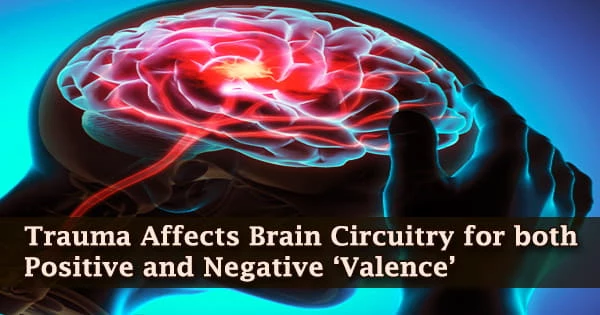A terrible encounter can leave an indelible mark on the brain in the form of post-traumatic stress disorder (PTSD) for many people. Hyperarousal and avoidance of hazardous, possibly unpleasant acts are hallmarks of PTSD.
Positive, or rewarding, behaviors are mediated by different circuitries in the brain, according to research. Negative, or unpleasant, behaviors are mediated by other circuitries, according to research. PTSD has long been assumed to be caused by excessive activity in the negative valence system, but a recent study finds that persons with PTSD also have a deficiency inactivation of positive valence processing shortly after a traumatic event, suggesting that it may play a role in PTSD resilience.
The study was published in Elsevier’s Biological Psychiatry: Cognitive Neuroscience and Neuroimaging.
The researchers, led by Talma Hendler, MD, Ph.D., and Ziv Ben-Zion, Ph.D., both of Tel Aviv University in Israel, identified 171 people who had been treated in a hospital emergency department for a trauma (such as a car accident) and were experiencing symptoms of PTSD within two weeks of the traumatic event.
The work provides insights on roles of both the positive and negative valence processing systems in the early development of post-traumatic psychopathology.
Dr. Ben-Zion said
Survivors were examined in the lab by a professional clinical interviewer one month after the event and had functional magnetic resonance imaging brain scans (fMRI). Six months and fourteen months after the trauma, the same assessments were done.
Participants played a competitive electronic gambling game designed to measure their sensitivity to risk, reward, and punishment while undergoing fMRI. Participants with more severe PTSD symptoms at the start of the trial made less hazardous choices in the game, and fMRI scans revealed that their amygdala, a brain area involved with fear processing and a critical aspect of the negative valence system, was more activated.
Reduced activity in the ventral striatum, a mesolimbic brain area involved in processing positive valence like rewards, predicted more severe PTSD symptoms at 14 months when measured at one month.
Dr. Ben-Zion said, “the work provides insights on roles of both the positive and negative valence processing systems in the early development of post-traumatic psychopathology.”
“While most of the research to date on stress and trauma has focused on the hyper-active negative valence system (e.g., increased fear and threat responses), our findings also suggest a critical role for hypo-active positive valence system (e.g., less neural activation towards rewards) in PTSD development and point to its role in resilience to traumatic stress and /or adaptive recovery from it.”
Cameron Carter, MD, Editor of Biological Psychiatry: Cognitive Neuroscience and Neuroimaging, said, “This work provides new insights into the fundamental changes in brain function that follow traumatic experiences and underlie the development of PTSD. The study shows us that these changes go beyond dysregulated threat processing and include brain systems related to reward and motivation that are likely to underlie changes in mood and motivated behavior in PTSD.”
“New therapeutic approaches should address both positive and negative valence systems, as these two are intrinsically linked and both affect the symptom development after experiencing traumatic stress,” Professor Hendler said, adding that the findings could have implications for therapeutic strategies to treat stress and anxiety-related disorders.
“Furthermore, we suggest that specific deficits in each valence system are associated with specific symptoms of PTSD, possibly pointing to distinct underlying mental processes that could guide a more personalized approach in psychiatric treatment.”





